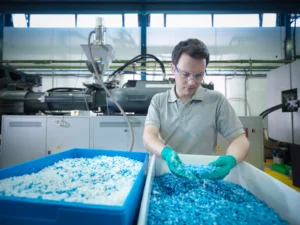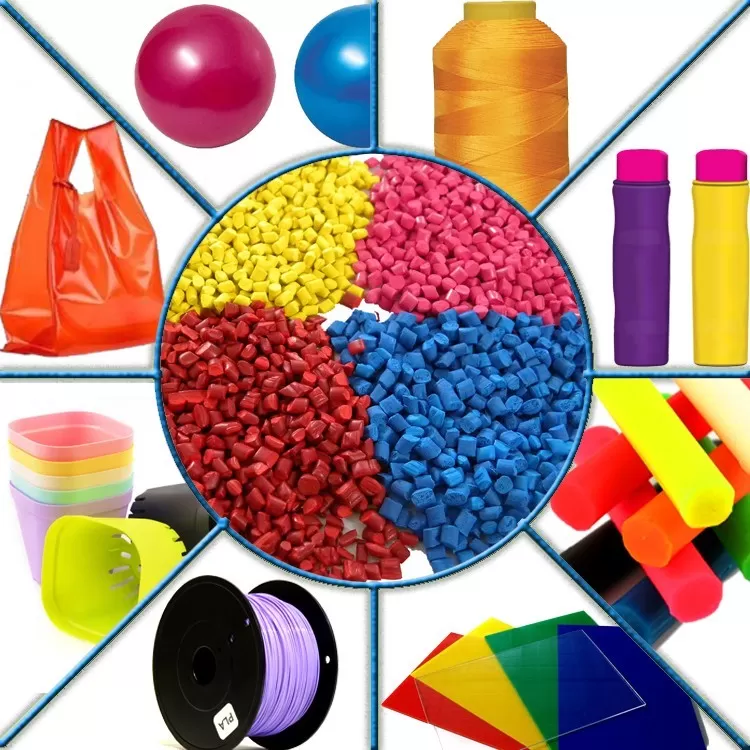Introduction

Have you ever wondered how you can contribute to saving our planet from the comfort of your home? One fantastic way to do this is by creating biodegradable polymers. These eco-friendly alternatives to traditional plastics can significantly reduce environmental pollution. Plus, making them at home can be a fun and educational project. So, let’s dive into the fascinating world of biodegradable polymers and learn how to create them yourself!
What Are Biodegradable Polymers?
Biodegradable polymers are materials that can decompose naturally by the action of microorganisms. Unlike conventional plastics, which can take hundreds of years to break down, biodegradable polymers degrade much faster, reducing their impact on the environment. They come in various forms, including starch-based polymers, polylactic acid (PLA), and polyhydroxyalkanoates (PHA).
Benefits of Biodegradable Polymers
Environmental Benefits
One of the primary advantages of biodegradable polymers is their minimal environmental footprint. They reduce the accumulation of plastic waste in landfills and oceans, helping to preserve natural habitats and protect wildlife.
Economic Benefits
Biodegradable polymers can also be cost-effective, especially when made at home. Using everyday materials reduces the need for expensive commercial products, saving you money in the long run.
Health Benefits
Traditional plastics often contain harmful chemicals that can leach into food and water. Biodegradable polymers, especially those made from natural ingredients, are safer and reduce the risk of chemical exposure.
Materials Needed for Making Biodegradable Polymers at Home
Creating biodegradable polymers doesn’t require a chemistry lab. Here’s a list of common household items you’ll need:
- Cornstarch or potato starch
- Vinegar or lemon juice
- Glycerin (available at most pharmacies)
- Water
- Saucepan
- Measuring cups and spoons
- Mixing bowl
- Stirring spoon
Safety Precautions
Before you start, it’s essential to take some safety precautions:
- Handling chemicals safely: Even though the ingredients are relatively harmless, always handle them with care.
- Protective gear: Wear gloves and safety glasses to protect your skin and eyes.
- Ventilation and workspace setup: Ensure your workspace is well-ventilated. A kitchen with a window or a fan works well.
Step-by-Step Guide to Creating Biodegradable Polymers
Preparation
- Gather all your materials and set up your workspace.
- Measure out your ingredients according to the recipe.
Mixing Ingredients
- In a saucepan, combine 1 tablespoon of cornstarch, 1 tablespoon of vinegar or lemon juice, 1 teaspoon of glycerin, and 4 tablespoons of water.
- Stir the mixture thoroughly until smooth.
Setting the Polymer
- Heat the mixture on medium heat, stirring constantly.
- As it heats, the mixture will begin to thicken. Continue stirring until it reaches a gel-like consistency.
Finalizing the Product
- Once thickened, remove the saucepan from heat.
- Pour the mixture into a mold or onto a flat surface to cool and set.
- Allow it to dry completely, which may take a few hours to a day, depending on the thickness.
Common Mistakes to Avoid
Creating biodegradable polymers is relatively simple, but here are some common mistakes to watch out for:
- Incorrect measurements: Follow the recipe precisely to ensure proper chemical reactions.
- Inadequate mixing: Ensure all ingredients are thoroughly mixed before heating.
- Improper storage: Store your finished polymer in a cool, dry place to prevent premature degradation.
Tips and Tricks for Successful Polymer Creation
- Ensuring consistency: Keep stirring until the mixture thickens uniformly.
- Testing the polymer: Before finalizing, test a small amount to ensure it has the desired properties.
- Adjusting the recipe: If your polymer is too brittle, try adding a bit more glycerin for flexibility.
Using Biodegradable Polymers in Everyday Life
Once you’ve created your biodegradable polymer, there are numerous ways to use it:
- Practical applications: Use it to make eco-friendly packaging or containers.
- DIY projects: Create fun craft items or educational projects with kids.
- Household uses: Replace traditional plastic items with your homemade polymer products.
Storing and Preserving Your Polymers
To ensure your biodegradable polymers last as long as possible:
- Ideal storage conditions: Keep them in a cool, dry place away from direct sunlight.
- Shelf life considerations: Understand that biodegradable polymers will degrade over time, so use them within a few months.
- Maintaining quality: Check periodically for any signs of decomposition and store them in airtight containers if possible.
Environmental Impact of Homemade Biodegradable Polymers
Creating biodegradable polymers at home has a significant positive impact on the environment:
- Reduction of plastic waste: Homemade polymers reduce the need for conventional plastics, lessening plastic pollution.
- Biodegradation process: These polymers break down naturally, returning to the environment without leaving harmful residues.
- Contribution to sustainability: Every small effort counts towards a more sustainable future.
Comparing Homemade vs. Commercial Biodegradable Polymers
Cost Comparison
Making biodegradable polymers at home is generally more affordable than buying commercial products. The ingredients are inexpensive and readily available.
Effectiveness
While homemade polymers may not always match the durability of commercial products, they are effective for many household and DIY uses.
Ease of Production
Creating polymers at home is a straightforward process, making it accessible to anyone interested in eco-friendly projects.
Creating biodegradable polymers at home is a rewarding and impactful activity. Not only does it help reduce plastic waste, but it also offers a cost-effective and safe alternative to conventional plastics. By following the steps and tips outlined in this guide, you can contribute to a healthier planet right from your kitchen. So, why not give it a try and see how your homemade biodegradable polymers can make a difference?
Common Mistakes to Avoid
Creating biodegradable polymers can be straightforward, but even the simplest recipes can go awry. Here are a few pitfalls to avoid:
- Incorrect Measurements: Precise measurements ensure the chemical reactions happen correctly. Use measuring spoons and cups for accuracy.
- Inadequate Mixing: Thoroughly mix all ingredients before heating to avoid clumps and ensure a consistent texture.
- Improper Storage: Once your polymer is made, store it in a cool, dry place to extend its life and maintain its quality.
Tips and Tricks for Successful Polymer Creation
Ensuring your biodegradable polymers turn out perfectly every time can take a bit of practice. Here are some handy tips:
- Ensuring Consistency: Keep stirring the mixture continuously while heating to ensure it thickens uniformly without lumps.
- Testing the Polymer: Test a small amount of the polymer on a flat surface to check its texture and durability before letting the entire batch set.
- Adjusting the Recipe: If the polymer is too brittle, add a little more glycerin to make it more flexible. Conversely, reduce glycerin if it’s too soft.
Using Biodegradable Polymers in Everyday Life
Now that you’ve created your biodegradable polymer, it’s time to put it to good use! Here are some practical applications:
Practical Applications
- Packaging: Create eco-friendly packaging materials for shipping and storage.
- Disposable Items: Make biodegradable utensils, plates, and cups for parties and picnics.
- Gardening Supplies: Use polymers to create plant pots and seedling trays that can degrade naturally in the soil.
DIY Projects
- Crafts: Use biodegradable polymers in art projects, such as moldable sculptures or custom jewelry.
- Educational Projects: Teach kids about sustainability and chemistry by making biodegradable polymers together.
Household Uses
- Food Storage: Use biodegradable wraps and containers for short-term food storage.
- Cleaning Products: Make biodegradable sponges and scrubbers for eco-friendly cleaning.
Storing and Preserving Your Polymers
To maximize the lifespan of your homemade biodegradable polymers:
Ideal Storage Conditions
- Cool and Dry: Store polymers in a cool, dry place to prevent premature degradation.
- Away from Sunlight: Keep them out of direct sunlight, which can speed up the breakdown process.
- Airtight Containers: Use airtight containers to protect them from moisture and pests.
Shelf Life Considerations
Understand that biodegradable polymers are designed to break down over time. Their shelf life can vary from a few months to a year, depending on the composition and storage conditions.
Maintaining Quality
- Regular Checks: Inspect your polymers periodically for signs of degradation, such as brittleness or discoloration.
- Proper Handling: Handle them gently to avoid cracking or breaking.
Environmental Impact of Homemade Biodegradable Polymers
Making biodegradable polymers at home contributes significantly to environmental conservation:
Reduction of Plastic Waste
Homemade biodegradable polymers help reduce reliance on conventional plastics, decreasing the amount of plastic waste in landfills and oceans.
Biodegradation Process
These polymers break down naturally into harmless substances, completing their life cycle without leaving toxic residues.
Contribution to Sustainability
By making and using biodegradable polymers, you actively participate in promoting sustainability and protecting natural resources.
Comparing Homemade vs. Commercial Biodegradable Polymers
Cost Comparison
Homemade polymers are often cheaper than commercial alternatives. The ingredients are affordable and readily available, making DIY polymers a cost-effective choice.
Effectiveness
While homemade polymers might not always match the durability of commercial ones, they are sufficiently effective for many household and DIY applications.
Ease of Production
Creating biodegradable polymers at home is relatively easy and doesn’t require specialized equipment, making it accessible to anyone interested in eco-friendly projects.
Conclusion
Creating biodegradable polymers at home is not only an enjoyable and educational activity but also a meaningful step toward environmental sustainability. By reducing plastic waste and using natural ingredients, you contribute to a healthier planet. So, gather your materials, follow the steps, and join the movement towards a greener future. Start small, make a difference, and inspire others to do the same!
Unique FAQs
1. How long does it take for homemade biodegradable polymers to degrade?
Homemade biodegradable polymers can degrade within a few months to a couple of years, depending on the environmental conditions and the composition of the polymer.
2. Can I use other starches besides cornstarch or potato starch?
Yes, you can experiment with other starches like rice or tapioca starch. Each starch may produce slightly different results, so it’s fun to experiment.
3. Are homemade biodegradable polymers safe for food storage?
While they are generally safe, it’s best to avoid using them for long-term food storage, especially with acidic or hot foods, as they may degrade faster.
4. Can I color my biodegradable polymers?
Absolutely! You can add natural food coloring or non-toxic dyes to the mixture before heating to create colorful polymers.
5. What should I do if my polymer is too brittle?
If your polymer turns out too brittle, try adding a bit more glycerin to the mixture. Glycerin acts as a plasticizer and helps make the polymer more flexible.






1 Comment
Pingback: Exploring the World of Biodegradable Polymers Products - greenpolymershub.com